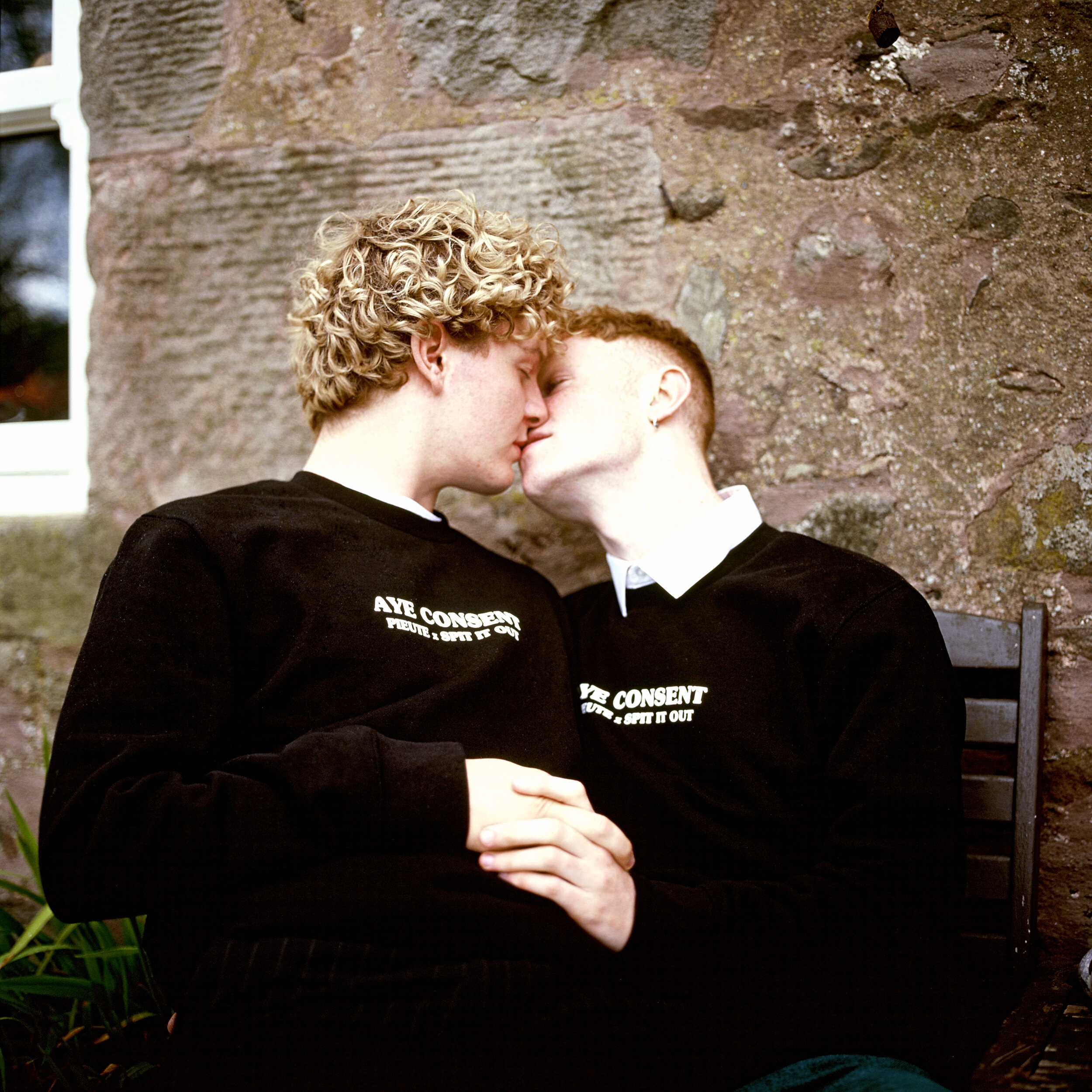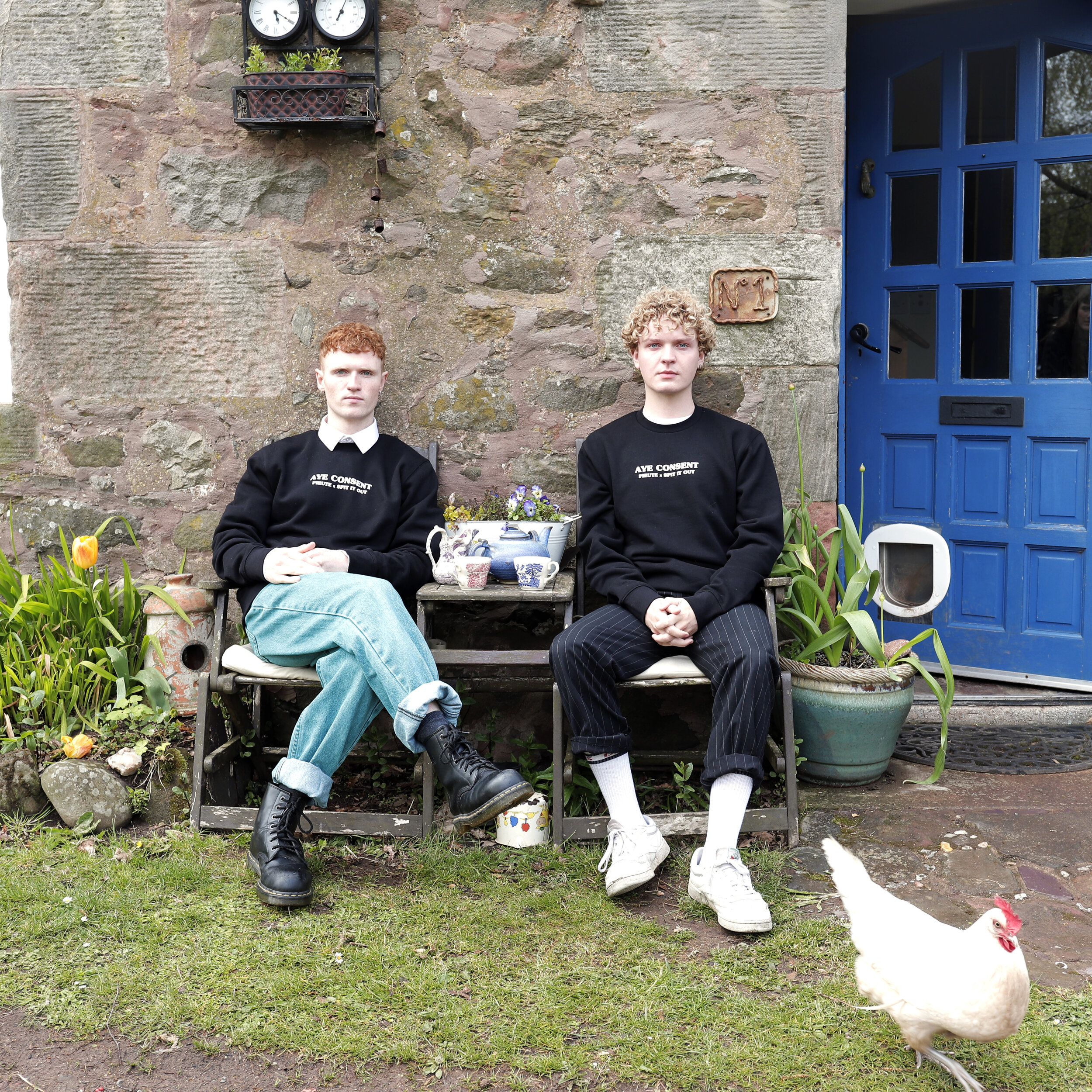




Photography by Seb Singh
Interviews by Erin May Kelly
Set Design by Isabel Forbes
Idea by Lea Luiz de Oliveira and Bee Asha Singh
Cal
You’ll often find Cal at Edinburgh Sculpture Workshop, where he is currently undertaking his residency. Cal’s work as a visual artist is best represented by his sculpture and filmmaking; wherein his conceptual focus weaves together themes of care, dependence and addiction. His work exemplifies a fluency with acts of intimacy; best shown in his latest endeavours into full body casting; “I think for casting; the process is the art; a human body is obviously so different to an object,” he explains, “vulnerable communication between me and the model is so important. I need to make sure that he’s okay.”
It is impossible to separate the concept of consent from his sculpture and filmmaking; “If you look at consent broadly, I think there’s lots of themes of consent within my work, to do with process, and with the actual concept,” he states. “Most of the information about what I’m doing is within body positions, and how two bodies can relate to each other in an either co-dependent or harmonious sense.” On his own definition of consent, Cal paints a clear perspective on the significance of mutual agreement; “although it has roots within a sexual nature, I don’t think it needs to be that way” he says. “There’s so many actions that [might] cross a boundary, and you need to negotiate whether you’re happy with that or not”.
Speaking to the Spit It Out x Pieute project, he believes strongly in the power of slogan as a political act; “I think wearing something can have such an immense power,” he tells me, “there’s loads of artists who use a simple bit of text to instigate a whole world of thought, and that’s what I hope this will do”.
Tom
It’s been six years since Tom Hutts first picked up a camera and began shooting photos of his friends. This year has seen the launch of Queer Intimacy, a photography zine which explores the intimacy of queer relationships, away from the heteronormative lens. Tom’s photographs are set within his flat during lockdown, allowing for a more playful and candid view of queer relationships from his perspective. “When it comes to taking pictures of my friends, it’s gotten to a point where all of my close friends, who I often take pictures of, are fully aware that I’m going to have a camera on me at all times,” he explains. “They used to pose for me when I’d get my camera out but now they know [the camera] is something I always have on me,” he continues; “that’s why I get all these relaxed, nice shots where people look natural.”
Our conversation turns to the nuances of consent within photography itself, and it becomes clear that Tom is considerate of this. “Consent plays a pretty big role in photography; compared to something like painting, where for the most part people have to sit down” he says. “There’s this kind of process for painting a portrait of someone where it’s a continually evolving thing, and ethics around consent in photography is actually a huge subject, and one that I kind of struggle with myself.” Expanding on these ideas of consent within the medium of photography, we turn to consent more generally; “It’s a mutual understanding,” he asserts, “it’s having set terms. You could say yes to something, but a yes means nothing if you were coerced or if you were given [information] under false impressions.”
Looking to his first memories of engaging with Spit It Out, he recalls joining the collective for a night of spoken word: “I so vividly remember Bee reciting one of her poems” he says, “It was the first time I’d heard a poem that almost brought me to tears. I had a lot of respect for the medium afterwards.” More generally, Tom is decisive on the role which the collective is able to fulfil; “I think Spit It Out has a real potential to do a lot of good, especially locally” he states. “As an Edinburgh based charity, I think Scotland’s such small place that you really can make your mark”. Speaking to the wider discourse; he calls for consent to become a more common aspect of conversations surrounding sex and identity. “I think [consent] is something that is missing from a lot of the discourse right now, about sexuality and gender identity; there needs to be a prevailing voice that is not just about identity and sex, it’s also about consent.”


